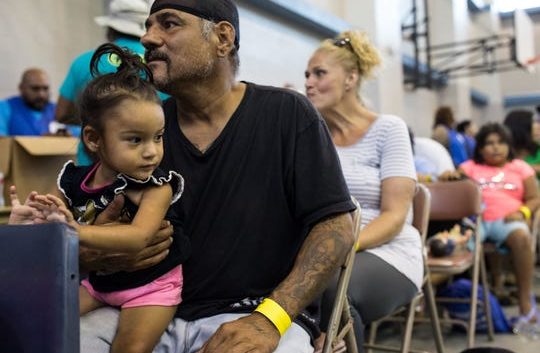Hurricane evacuation: After Hurricane Harvey here's what could happen with the next storm

Storm surge and flooding are the greatest threats to Corpus Christi in a hurricane. Kirsten Crow/Caller-Times, Kirsten Crow/Caller-Times
It’s always the big question when a hurricane approaches: hunker down or get out of dodge?
That’s exactly what academics and local officials want to know about a post-Harvey Coastal Bend — who left before the storm, who didn’t, why and if they would make the same decision again.
Earlier this month, Texas A&M University researchers sent 6,000 surveys to Gulf Coast county residents to get a more comprehensive understanding of how those calls were made.
That data, along with a review of new storm surge projections, will be used by local and regional officials for emergency preparations — for example, updating traffic plans that could identify and mitigate potential choke points on the roads during an evacuation.
More:Outdated flood maps, growing Corpus Christi could mean disaster
“(It) helps with understanding what is likely to happen throughout the area,” said Walter Gillis Peacock, director of the Hazard Reduction and Recovery Center at Texas A&M University.
Households in eight counties — Nueces, Aransas, San Patricio, Refugio, Calhoun, Jackson and Victoria counties — were randomly selected for the survey.
Although primarily a traffic study, the data is expected to eventually be used for much more, such as analyzing population vulnerabilities.
For Corpus Christi, the findings will likely be the first significant update to the city’s emergency traffic plans in more than a decade.
Updating those plans is needed for changes in population and traffic flow, said Billy Delgado, Corpus Christi’s emergency management coordinator.
Since the last revision, it’s estimated the city has grown by an estimated 20,000 to 326,000 people.
More:What to do when a hurricane is headed your way
WHAT DID WE LEARN FROM HURRICANE HARVEY?
Delgado and Melissa Munguia, Nueces County’s emergency management coordinator, both said evacuations during Hurricane Harvey in 2017 generally went well.
But, Munguia pointed out, the evacuations in Nueces County and Corpus Christi weren’t mandatory.
While local leaders strongly urged residents in low-lying areas to head for higher ground, there wasn’t a evacuation like there was in Port Aransas and Rockport. The populations of those areas numbered about 4,000 and 10,000, respectively.
It means Harvey wasn’t even close to a real-world test run — had Corpus Christi and Nueces County’s orders been mandatory, an estimated 362,000 people living in Nueces County would have been under order to leave.
Are you prepared? Check out our Hurricane Hub.
Getting people out would have looked very different under “similar circumstances, except we saw the eye of the storm barreling in right on Corpus,” Munguia said.
“As far as Harvey goes, what makes it interesting is we didn’t do a countywide mandatory evacuation — so that changes a lot of things,” she said.
It would be difficult to gauge how Nueces County residents might respond now to an approaching storm, Munguia said.
Experts have said it partially comes down to perception and how perception may have changed in 2017. Much of Nueces County, with the exception of Port Aransas, didn’t experience the Category 4 conditions of the Category 4 hurricane. Some areas saw the equivalent strength of a Category 1 hurricane, but for most, it was essentially a strong tropical storm.
More:Here’s your ultimate hurricane supply list
Experts have warned there is danger in chalking up those kinds of experiences as “making it through Harvey,” and assuming there would be little need to evacuate in the next storm.
Part of the messaging officials are pushing is each storm is different — just because you and your home weren’t severely damaged in Harvey, doesn’t mean the same would be true in another storm.
And while categories represent wind speed of hurricanes, it doesn’t measure what’s most lethal: flooding from rain and storm surge.
“It’s always a 50-50 percent chance,” Munguia said. “Either evacuate and it wasn’t necessary — or evacuate and it was the best decision.”
Want more coverage on issues that matter to you? Consider supporting local journalism with a digital subscription to the Caller-Times.
RELATED COVERAGE
More:How would Corpus Christi’s downtown seawall hold up in a hurricane?
More:Don’t be fooled by ‘near-normal’ hurricane predictions, NOAA says
More:How many hurricanes are predicted in 2019?
Read or Share this story: https://www.caller.com/story/weather/hurricanes/2019/07/11/how-long-does-take-evacuate-hurricane-south-texas/1517889001/